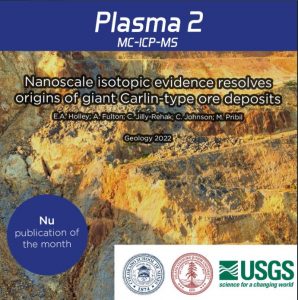
ABSTRACT The western North American Great Basin’s Carlin-type deposits represent the largest accumulation of gold in the Northern Hemisphere. The controversy over their origins echoes the debate between Neptunists and Plutonists at the birth of modern geology: were the causative processes meteoric or magmatic? Sulfur isotopes have long been considered key to decoding metal cycling in the Earth’s crust, but previous studies of Carlin-type pyrite lacked the spatial resolution to quantify differences among the numerous generations of sulfide mineralization. We developed a new dual-method, nanoscale approach to examine the fine-grained ore pyrite. The δ34S of the ore pyrite varies systematically with Au concentration at the nanoscale, indicating that both magmatic and meteoric fluids contributed during mineralization, but the magmas brought the gold. Repeated oscillations in fluid ratios upgraded the metal content, resulting in high gold endowment. Our results demonstrate that high-spatial-resolution studies are key to elucidate the spatiotemporal evolution of complex hydrothermal systems.
https://doi.org/10.1130/G49888.1